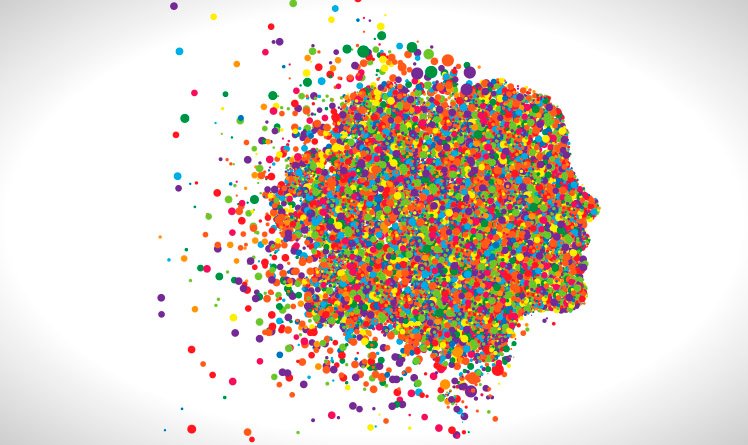Color psychology: what it is and how it can influence us

|
Getting your Trinity Audio player ready...
|
Have you ever stopped to think about the impact that colors have on our emotions and behaviors? Color psychology is a fascinating field that studies exactly this.
In this article, we will explore what color psychology is, how it influences us, and how we can use this knowledge in a practical way in different areas of our lives.
What is color psychology?
Color psychology is a field of study that explores the relationship between colors and human behavior. It examines how different hues can influence our emotions, thoughts and actions. Colors can evoke feelings, create atmospheres and convey subtle messages.
Although color psychology is a relatively new field, research on the subject has already shown that colors can have a significant impact on our lives. For example, studies have shown that red can increase heart rate and blood pressure, while blue can have a calming effect.
The History of Color Psychology
The history of color psychology dates back to ancient times. Early cultures used colors for religious and ceremonial purposes. For example, in Ancient Egypt, the color blue was associated with royalty and divinity, while black was associated with death and mourning.
In the Middle Ages, colors were also used for symbolic purposes. Red was associated with love and passion, while yellow was associated with joy and happiness. Green was associated with nature and fertility, while blue was associated with peace and tranquility.
In the 19th century, the psychology of colors began to be studied scientifically. One of the first studies to be carried out was conducted by Johann Wolfgang von Goethe, who published his book “Theory of Colors” in 1810. Goethe believed that colors had a physical and psychological effect on people.
In the 20th century, research into the psychology of color continued to grow. One of the most famous studies was conducted by Max Luscher in 1950. Luscher developed a color test that he believed could reveal a person's personality.
How colors influence us
Emotions
Colors have the power to evoke a variety of emotions. For example, red can evoke passion and energy, while blue conveys calm and serenity. Therefore, understanding how colors make us feel can help us create environments that promote emotional well-being.
Behavior
Studies show that using certain colors in work environments, for example, can increase productivity and creativity of employees. Thus, in addition to affecting our emotions, colors can also influence our behaviors and decisions.
The psychology of each color
Red
Red is the warmest and most stimulating color on the spectrum. As such, it is associated with a range of strong emotions, including passion, love, anger, danger, and excitement. Another association with red is that it can increase heart rate and blood pressure, which can make it a good color to use in environments that require energy and action. However, overuse of red can be overwhelming and irritating, so it is important to use it in moderation.
Orange
Orange is a cheerful and optimistic color that is associated with energy, enthusiasm, and creativity. As such, it can be used to create a warm and inviting atmosphere. On the other hand, orange can also increase appetite, making it a good color to use in restaurants and kitchens.
Yellow
Yellow is the color of happiness, joy, and optimism. As such, it can be used to brighten your mood and boost your energy levels. Yellow can also improve concentration and memory. However, too much yellow can be tiring on the eyes, so it’s important to use it in moderation.
Green
Green is the color of nature, harmony, and health. It is associated with peace, calm, and growth. As such, green can have a relaxing effect on the body and mind, making it a good color to use in spaces where relaxation is important, such as bedrooms and living rooms.
Blue
Blue is the color of the sky and the sea. As such, it is associated with peace, tranquility, and trust. Blue can reduce heart rate and blood pressure, making it a good color to use in environments where calm is important, such as offices and classrooms.
Indigo
Indigo is a calming and relaxing color that is associated with peace, wisdom, and spirituality. Therefore, wearing it can help reduce stress and anxiety. Indigo is also associated with improving concentration and creativity.
Violet
Violet is a luxurious and mysterious color that is associated with royalty, creativity, and spirituality. In this sense, we can use it to create a dramatic and sophisticated atmosphere. In addition, the color can also enhance intuition and psychic perception.
White
White is the color of purity, innocence, and perfection. In other words, it can be used to create a sense of space and cleanliness. At the same time, white can also be used to symbolize new beginnings.
Black
Black is the color of strength, authority, and mystery. It can be used to create a sense of drama and sophistication. Likewise, black can be used to symbolize power and death.
Gray
Gray is a neutral color that is associated with stability, maturity, and intelligence, and can be used to create a sense of calm and balance. Gray can also be used to symbolize impartiality and professionalism.
Practical applications of color psychology
Marketing and advertising
In the world of marketing and advertising, color psychology is widely used to influence consumer behavior. From packaging design to logo creation, colors are carefully selected to convey a specific message and grab the attention of the target audience.
Interior design
In interior design, colors play a key role in creating environments that promote well-being and functionality. Therefore, by choosing the right colors for walls, furniture and accessories, it is possible to create spaces that stimulate creativity, promote relaxation or increase productivity.
Color therapy
In healthcare, color therapy is a therapeutic approach that uses colors to promote emotional balance and physical. Different colors are believed to have healing properties and can be used to alleviate symptoms of stress, anxiety, and other mental health conditions.
Tips for using color psychology to your advantage
To reap the benefits of color psychology in your life, here are some simple tips:
- Know your purpose: Before choosing a color, think about what you want to convey or achieve.
- Observe your emotions: Pay attention to how different colors make you feel and use that to your advantage.
- Experiment: Don’t be afraid to experiment with different color combinations and see what works best for you.
In short…
Color psychology is a powerful tool that can influence our emotions, behaviors, and decisions in subtle but significant ways. By understanding the meaning of colors and how they affect us, we can use them strategically in many areas of our lives, from interior design to marketing to therapy.
So the next time you’re choosing a color to paint the walls of your home or creating a new logo for your business, remember the power of colors and how they can impact the world around you.
Reading indication;
Image: Freepik

Marcel Castilho is an expert in neuromarketing, neuroscience, mindfulness and positive psychology. In addition to being an advertiser, he also has a Master's degree in NLP – Neurolinguistic Programming. As the owner and founder of the communications agency VeroCom and also of the digital agency Vero Contents, he has been studying human behavior for over 30 years.

